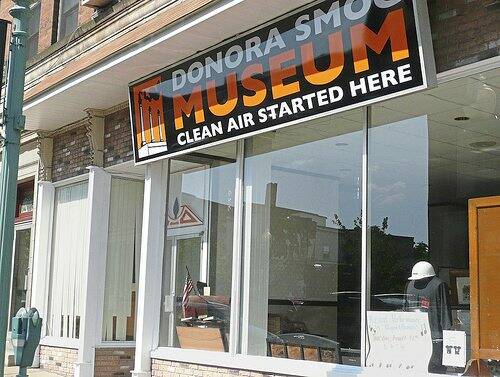Historical society, author will mark 75th anniversary of Donora smog disaster
Seventy-five years ago this October, residents in the Mon River mill town of Donora noticed something wrong with the air, something different from the typical steel-industry smog that characterized the region at the time.
The nearby U.S. Steel Donora Zinc Works had released two dangerous gases, hydrogen fluoride and sulfur dioxide, which were rapidly filling the skies.
For five days in late October 1948, a weather event called a temperature inversion — in which warmer air higher in the atmosphere traps pollution in the layer of colder air near the ground — kept the gas lingering in the area, resulting in the death of more than 20 residents, with thousands more sickened.
Within a month of the incident, roughly 70 residents had died.
Author Andy McPhee said when it comes to environmental issues, the United States “has a tendency not to make any changes until something really bad happens.”
The Donora smog disaster was such an event, and McPhee, author of “Donora Death Fog: Clean Air and the Tragedy of a Pennsylvania Mill Town,” will be joined by Donora Historical Society and Smog Museum curator Brian Charlton Sept. 26 at a presentation to mark its upcoming 75th anniversary.
“While it was one of the worst environmental disasters in U.S. history, the Donora smog disaster had the positive effect of raising widespread awareness of dangers caused by industrial air pollution,” said Battle of Homestead Foundation President John Haer. “It was an awareness that would spark an interest in a new kind of public health research and passage of environmental reforms including the Clean Air Act of 1970.”
The smog museum opened in 2008 under the slogan, “Clean air started here.”
“We commemorate the survivors of the 1948 disaster and also celebrate the important role the disaster played in nurturing the rise of America’s environmental consciousness.”
The foundation will host a Zoom meeting with Charlton and McPhee at 7:30 p.m. Sept. 26, discussing the role the disaster played in changing public and legislative awareness about air pollution.
There is no cost to attend, but registration is required at Eventbrite.com — type “1948 Donora Smog Disaster” in the search box.
Patrick Varine is a TribLive reporter covering Delmont, Export and Murrysville. He is a Western Pennsylvania native and joined the Trib in 2010 after working as a reporter and editor with the former Dover Post Co. in Delaware. He can be reached at pvarine@triblive.com.
Remove the ads from your TribLIVE reading experience but still support the journalists who create the content with TribLIVE Ad-Free.



